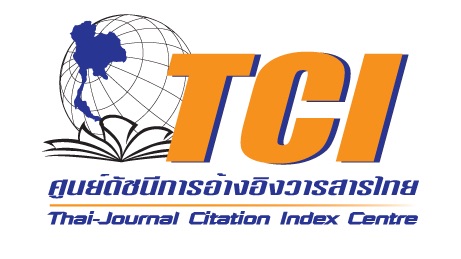A Study of the Reflection of the Male Homosexual Group in the Male Homosexual Novel Named Nitanpandow of Bacteria
Keywords:
Reflection, Male homosexual group, MSM novelAbstract
This research aimed to Study of the Reflection of the Male Homosexual Group in the Male Homosexual Novel Named Nitanpandow of Bacteria, By qualitative research methodology and analyze the reflection of the male homosexual group in the male homosexual novel named Nitanpandow Bacteria The results of the study found that analysis of male homosexual reflection on the characteristics of people, it was found that the MSM male and female had different expressions of love behaviors. The characters were male and female, there was an expression of love during sex. but heterosexual characters cannot express their love between the sexes. because it was love that is wrong with the gender according to the nature of the human being. The reflection on the way of life showed that captain Phupha He had a career in military service because a career in the military service must be a strong person and be able to protect others when showing that they had good feelings about the same sex the masculinity in itself was reduced, and the reflections on the attitude found that the military profession and protect the female. However, the main character in the story who was shown to design a gay male inability to express clearly. The reflections from various ideas found patriarchal ideas. from the event that Gen. Teerayut, the father of Thian who used their power to command captain Phupha to take care of him while he became a volunteer teacher. The characteristic of Phapundao or the Akha tradition for men who were about to get married and try to have sexual relations with a widow first. Feminist concept, Khun Ying Lalita was a charitable person. She always went out with her husband. What Khun Ying Lalita was doing despite of her happiness it was done for saving her husband face and dignity ang the concept of queer theory is Thian and captain Phupha where they had a good relationship with each other which was love among male homosexuals However, they did not show off or let the people determine try themselves what gender were they both.
References
กาญจนา แก้วเทพ และสมสุข หินวิมาน. (2551). สายธารแห่งนักคิดทฤษฎีเศรษฐศาสตร์การเมืองกับการสื่อสารศึกษา. กรุงเทพฯ: ภาพพิมพ์.
กุหลาบ มัลลิกะมาส. (2525). วรรณกรรมไทย. กรุงเทพฯ: มหาวิทยาลัยรามคำแหง.
กุหลาบ มัลลิกะมาส. (2529). วรรณกรรมวิจารณ์. (พิมพ์ครั้งที่ 6). กรุงเทพฯ: มหาวิทยาลัยรามคำแหง.
จักรกริช โพธิ์ศรี. (2557). การนำเสนอภาพแทนของกลุ่มรักร่วมเพศชายในเพลงลูกทุ่งและหมอลำ. (วิทยานิพนธ์ปริญญาศิลปศาสตรมหาบัณฑิต). ขอนแก่น:
สาขาวิชาภาษาไทย บัณฑิตวิทยาลัย มหาวิทยาลัยขอนแก่น.
ชัยณรงค์ อกอุ่น. (2558). หลักการอ่าน “นวนิยาย” เพื่อการเสพได้อรรถรส. (ม.ป.ท.).
ชูศักดิ์ ภัทรกุลวณิชย์ และนพพร ประชากุล. (2535). การศึกษาวรรณกรรม: ศาสตร์เฉพาะกับสหวิทยาการ. เอกสารประกอบการสัมมนาวิชาการเรื่อง มนุษยศาสตร์: พรมแดนปัจจุบันเส้นทางสู่อนาคต. กรุงเทพฯ: มหาวิทยาลัยธรรมศาสตร์.
ไชยศิริ บุญยกุลศรีรุ่ง. (2553). เพศสภาพและวิถีชายรักชายในภาพยนตร์ไทย. (วิทยานิพนธ์ปริญญามหาบัณฑิต). กรุงเทพฯ: จุฬาลงกรณ์มหาวิทยาลัย.
ธัญญา สังขพันธานนท์. (2539). วรรณกรรมวิจารณ์. กรุงเทพฯ: นาคร.
นฤพนธ์ ด้วงวิเศษ และ ปีเตอร์ เอ. แจ๊คสัน (บก.). (2556). เพศหลากหลายเฉดสี. กรุงเทพฯ: ศูนย์มนุษยวิทยาสิรินธร (องค์การมหาชน).
นฤพนธ์ ด้วงวิเศษ. (ม.ป.ป.). แนวคิดทฤษฎีเรื่อง “ความหลากหลายทางเพศ”ในกระบวนทัศน์วิทยาศาสตร์และสังคมศาสตร์. กรุงเทพฯ: ศูนย์มานุษยวิทยา
สิรินธร (องค์การมหาชน).
ปริญญา เกื้อหนุน. (2537). เรื่องสั้นอังกฤษและอเมริกัน. กรุงเทพฯ: โอเดียนสโตร์.
ปิยรัตน์ มาร์แต็ง. (2546). แนวทางการให้การศึกษาเพื่อความเข้าใจในวิถีชีวิตของคนรักเพศเดียวกัน. (วิทยานิพนธ์ปริญญามหาบัณฑิต). กรุงเทพฯ:
จุฬาลงกรณ์มหาวิทยาลัย.
พรพิไล ถมังรักษ์สัตว์. (2539). ปรัชญาผู้หญิง. กรุงเทพ ฯ: จุฬาลงกรณ์มหาวิทยาลัย.
พรรณทิภา จีนกลับ. (2551). การศึกษาวิเคราะห์นวนิยายไทยที่นำเสนอการเดินทางข้ามเวลา. (ปริญญานิพนธ์ศิลปศาสตรมหาบัณฑิต). กรุงเทพฯ: มหาวิทยาลัยศรีนครินทรวิโรฒ.
พิศมัย ศรีอนุพันธ์. (2526). วรรณกรรมปัจจุบัน: นวนิยาย (Novel) วารสารวัฒนธรรมไทย. (ม.ป.ท.).
มัทนา เชตมี. (2539). วิถีชีวิตและชีวิตครอบครัวของหญิงรักหญิง. (วิทยานิพนธ์ปริญญามหาบัณฑิต). กรุงเทพฯ: มหาวิทยาลัยธรรมศาสตร์.
ลักษณวัต เจริญพงศ์. (2544). ปรัชญาภาวะสตรี. กรุงเทพ ฯ: มหาวิทยาลัยรามคำแหง.
วรภัทรา บูรณะกิจเจริญ. (2543). พัฒนาการพฤติกรรมหญิงรักร่วมเพศ. (วิทยานิพนธ์ปริญญามหาบัณฑิต). กรุงเทพฯ: มหาวิทยาลัยธรรมศาสตร์.
วรรณนะ หนูหมื่น. (2552). นวนิยายรักร่วมเพศ: ปัญหาและคุณค่าของมนุษย์. (ปรัชญาดุษฎีบัณฑิต). สงขลา: สาขาวิชาภาษาไทย มหาวิทยาลัยสงขลานครินทร์.
วรรณนะ หนูหมื่น. (2554). ลักษณะเด่นของนวนิยายรักร่วมเพศไทย พ.ศ. 2548-2552: แนวคิดสำคัญกับกลศิลป์ที่สื่อความหมายบทประพันธ์. (ปรัชญาดุษฎีบัณฑิต).
สงขลา: สาขาวิชาภาษาไทย มหาวิทยาลัยสงขลานครินทร์.
วรางคณา สุขม่วง. (2560). ภาพสะท้อนคนรักเพศเดียวกันในสังคมผ่านภาพยนตร์ไทย. (วิทยานิพนธ์มหาบัณฑิต). กรุงเทพฯ: มหาวิทยาลัยกรุงเทพ.
วสิทธิ์ เส้งเลี่ยม. (2555). สิทธิในการแต่งงานของคนรักเพศเดียวกันในประเทศไทย. (วิทยานิพนธ์ปริญญามหาบัณฑิต). กรุงเทพฯ: มหาวิทยาลัยธรรมศาสตร์.
วิริยะ สิริสิงห์. (2537). การสร้างสรรค์วรรณกรรมสำหรับเด็กและเยาวชน. กรุงเทพฯ: สุวีริยาสาส์น.
วารุณี ภูริสินสิทธิ์. (2545). สตรีนิยม: ขบวนการและแนวคิดทางสังคมแห่งศตวรรษที่ 20. กรุงเทพฯ: โครงการจัดพิมพ์คบไฟ.
วิทย์ ศิวะศริยานนท์. (2544). วรรณคดีและวรรณคดีวิจารณ์. กรุงเทพฯ: ธรรมชาติ.
วิภา กงกะนันทน์. (2540). กำเนิดนวนิยายในประเทศไทย. กรุงเทพฯ: ดอกหญ้า.
วิมลวรรณ ขอบเขต. (2557). การสร้างสรรค์ภาษาและภาพสะท้อนสังคมของเพลงตลกคำเมือง. (วิทยานิพนธ์ปริญญามหาบัณฑิต). กรุงเทพฯ: มหาวิทยาลัยธรรมศาสตร์.
สมพร จารุนัฏ. (2542). โครงภาพรามเกียรติ์. กรุงเทพฯ: การศาสนา.
สมสุข หินวิมาน. (2548). ประมวลสาระชุดวิชาปรัชญานิเทศศาสตร์และทฤษฎีการสื่อสาร. กรุงเทพฯ: มหาวิทยาลัยสุโขทัยธรรมมาธิราช.
สายทิพย์ นุกูลกิจ. (2537). วรรณกรรมไทยปัจจุบัน. กรุงเทพฯ: มหาวิทยาลัยศรีนครินทรวิโรฒ.
สุพรรณี วราทร. (2519). ประวัติการประพันธ์นวนิยายไทย ตั้งแต่สมัยเริ่มแรกจนถึง พ.ศ. 2475. กรุงเทพฯ: มูลนิธิโครงการตำราสังคมศาสตร์และมนุษยศาสตร์.
สุธิวงศ์ พงศ์ไพบูลย์. (2525). วรรณคดีวิเคราะห์. กรุงเทพฯ: ไทยวัฒนาพานิช.
สุรเดช โชติอุดมพันธ์. (2560). ทฤษฎีวรรคดีวิจารณ์ตะวันตกในคริสต์ศตวรรษที่ 20. (พิมพ์ครั้งที่ 2). กรุงเทพฯ: จุฬาลงกรณ์มหาวิทยาลัย.
สุไรพร ชลวิไล. (2545). ตัวตนในเรื่องเล่า: การต่อรองทางอัตลักษณ์ของหญิงรักหญิง. (วิทยานิพนธ์ดุษฎีบัณฑิต). กรุงเทพฯ: มหาวิทยาลัยธรรมศาสตร์.
หทัยวรรณ มณีวงษ์. (2560). วรรณกรรมวิจารณ์. นครราชสีมา: มหาวิทยาลัยราชภัฏนครราชสีมา.
อรทัย เพียยุระ. (2561). วรรณกรรมกับเพศภาวะ. (พิมพ์ครั้งที่ 2). ขอนแก่น: ขอนแก่นการพิมพ์.
อัตนันท์ เตโชพิศาลวงศ์. (2554). วาทกรรมสะท้อนภาพไทยผ่านหนังสือพิมพ์ประเทศอนุภูมิภาคลุ่มน้ำโขง. (วิทยานิพนธ์ปริญญาดุษฎีบัณฑิต). กรุงเทพฯ:
มหาวิทยาลัยธรรมศาสตร์.
อิงอร สุพันธุ์วณิช. (2547). วรรณกรรมวิจารณ์. กรุงเทพฯ: จุฬาลงกรณ์มหาวิทยาลัย.
Abrams, M.H. (1957). Glossary of Literature Terms. 3 th ed. New York: Holt,Rinchart and Winston, Inc.
Blackwood, E. (1986). “Breaking the Mirror: The Construction of Lesbianism andthe Anthropological Discourse on Homossexuality”In Anthropology and Homosexual Behavior. New York: TheHaworth Press.
Dennis Altman. (1974). Homosexual: Oppression and Liberation, rev. ed. London: Allen Lane.
Eve Kosofsky Sedgwick. (1985). Between Men : English Literature and Male Homosocial Desire. New York: Columbia University Press.
Evelyn Reed. (1976). Woman's Evolution from Matriarchal Clan to Patriarchal Family. Indonesian: Farsi.
Garton. (2004). Stephen. Histories of Sexuality. New York, Routledge.
Gayle Rubin. (1975). The Traffic in Woman: Notes on the “Political Economy of Sex”, in Rayna R. Reiter, ed., Toward an
Anthropology of Woman. New York: Monthly Review Press.
Gloria Anzaldua. (1977). “La conscienie de la mestiza: Towards a New Consciousness ”, in Alma M. Garcia, ed., Chicana Feminist
Thought: The Basic Historical Writings. New York: Routledge.
Hall, S. (1997). Representation. London: Sage in association with the OpenUniversity.
Humm, M. (1992). Feminisms: A Reader. Herfordshire: Harvester Wheatsheaf.
Humm, M. (1999). The Dictionary of Feminist. Theory: Essex: Prentice Hall.
Downloads
Published
How to Cite
Issue
Section
License

This work is licensed under a Creative Commons Attribution-NonCommercial-NoDerivatives 4.0 International License.







